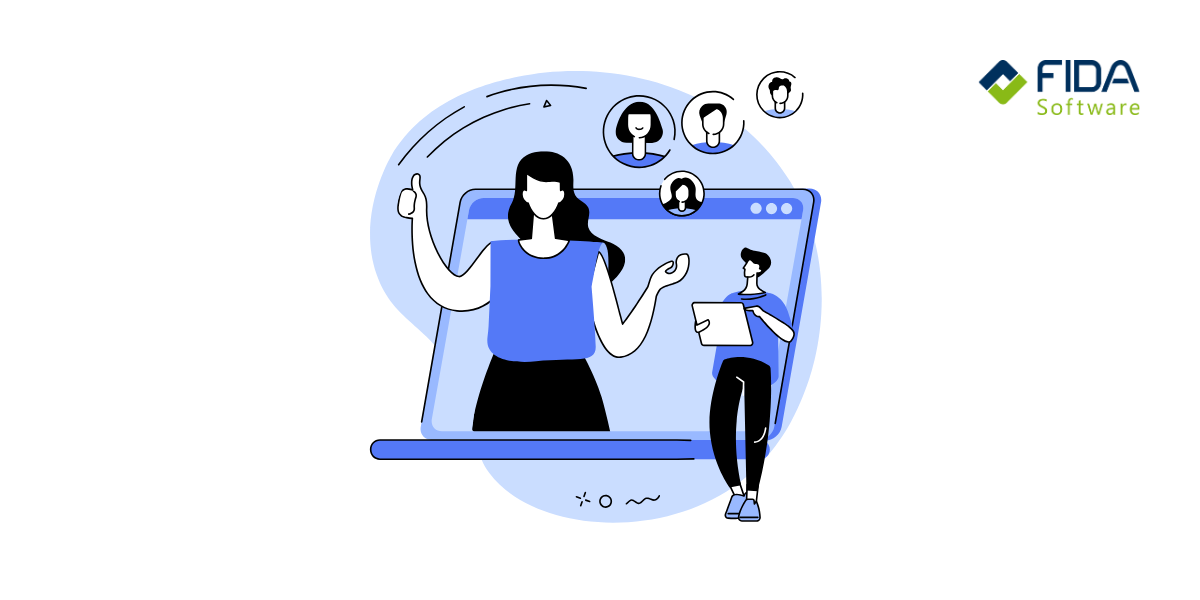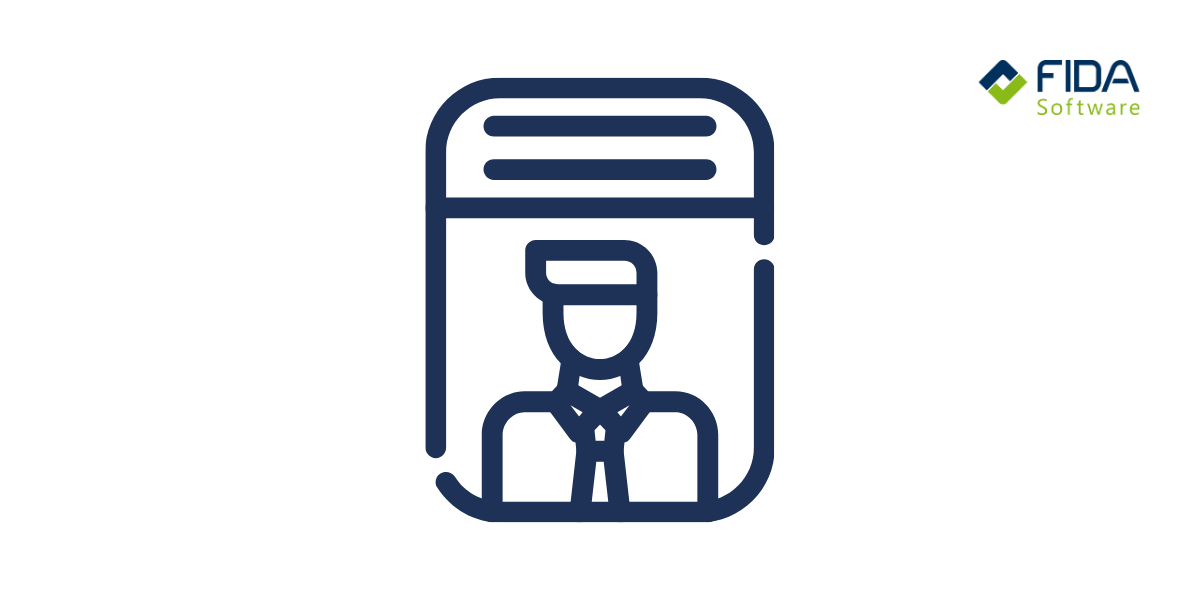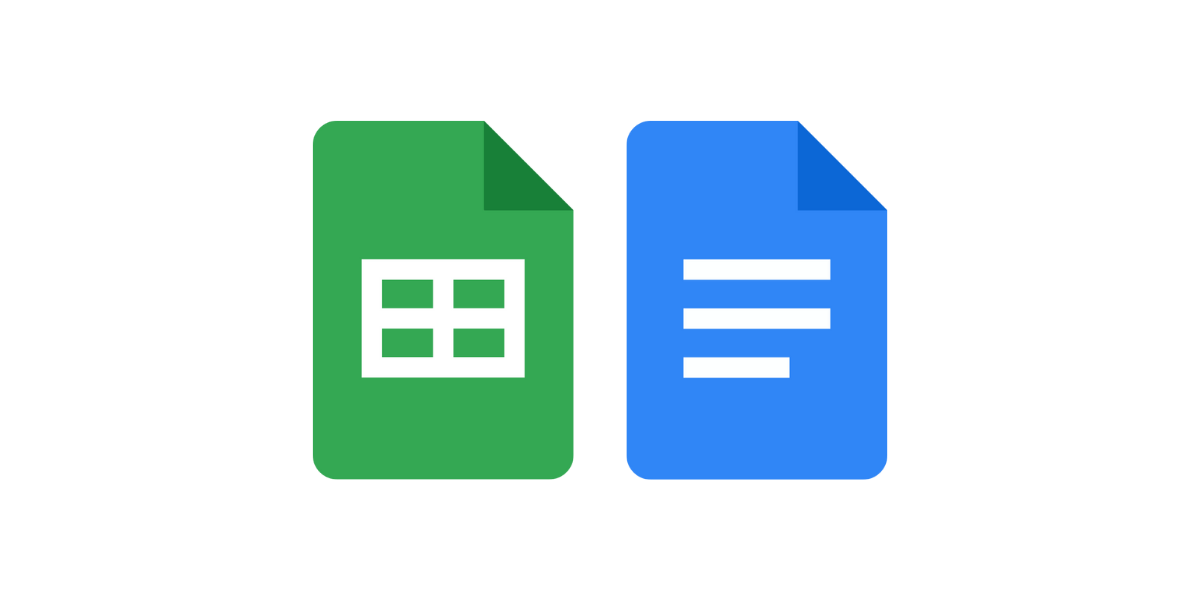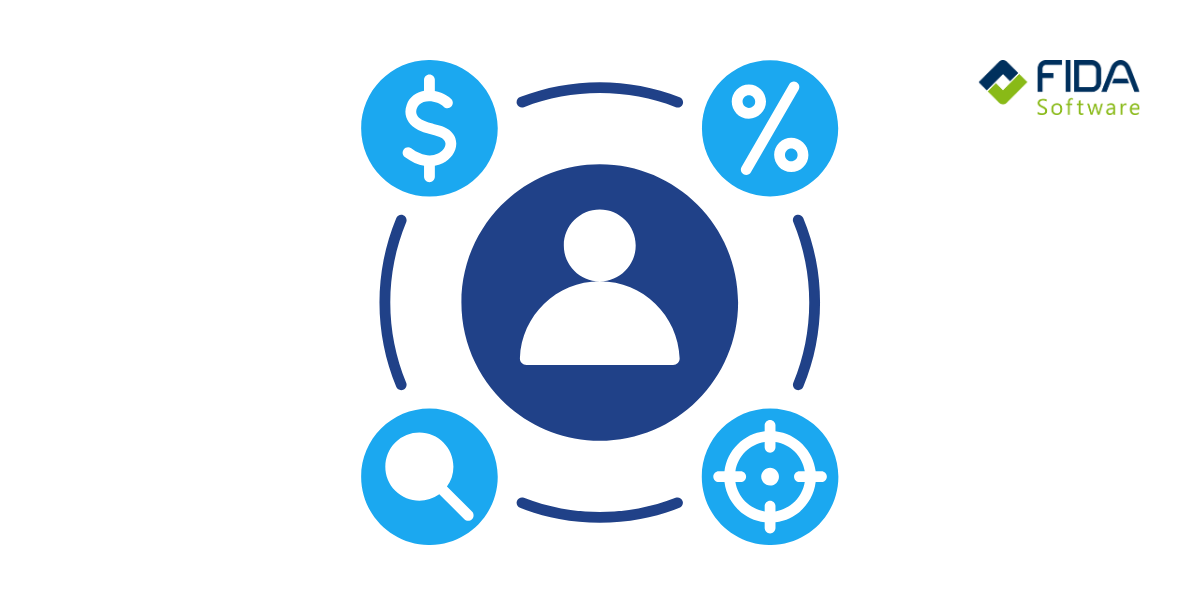
How to create a persona: step-by-step guide, free templates, tools & tips
In software development, UX design or marketing, we are often faced with a central question: "Who are we actually doing this for?" Of course, for our customers! But anyone who is satisfied with this answer will probably fail with their project! At this point, a clear definition of personas is crucial as the basis for user-centered development.
If you don't know the needs, expectations and behaviors of your users or customers, you will quickly miss the mark. We say that doesn't have to be the case! By creating and using personas, you can be sure that you are not missing the mark! It is crucial to understand the wishes of the target group in order to respond specifically to their needs.
Personas are fictitious but data-based representations of real user groups and help teams to develop a common understanding of the target groups and thus make better decisions: more user-centered, more targeted, more successful - especially because a precise target group definition contributes significantly to the success of projects.
At FIDA, we also rely on personas in product development, software development and UI/UX design in order to better understand our respective target groups.
Are you looking for support with your software project? Contact us and we'll put the right experts at your side!
In this article we show you:
What exactly is meant by a persona and a buyer persona,
how personas differ from classic target groups,
why they are so effective,
and how you can create your own in just a few steps - including practical examples, tools and templates.
What is a persona?
As already mentioned, a persona is a fictitious person based on real data. It represents a specific user or customer group. It is given a name, a face, demographic characteristics, professional background, goals, challenges (e.g. in dealing with technology) and behaviors. This turns abstract user profiles into a tangible image that teams can identify with on a day-to-day basis.
The idea behind it
Instead of developing or marketing for an anonymous mass, the product or communication is aimed at a specific person with real needs.
Example: Instead of "Our target group is working women between 30 and 45", it could say: "Sandra (35) is a product manager, uses digital solutions every day, pays attention to efficiency and wants simple, time-saving solutions.
Personas help to identify the actual ideas and expectations of users and incorporate them into product development in a targeted manner.
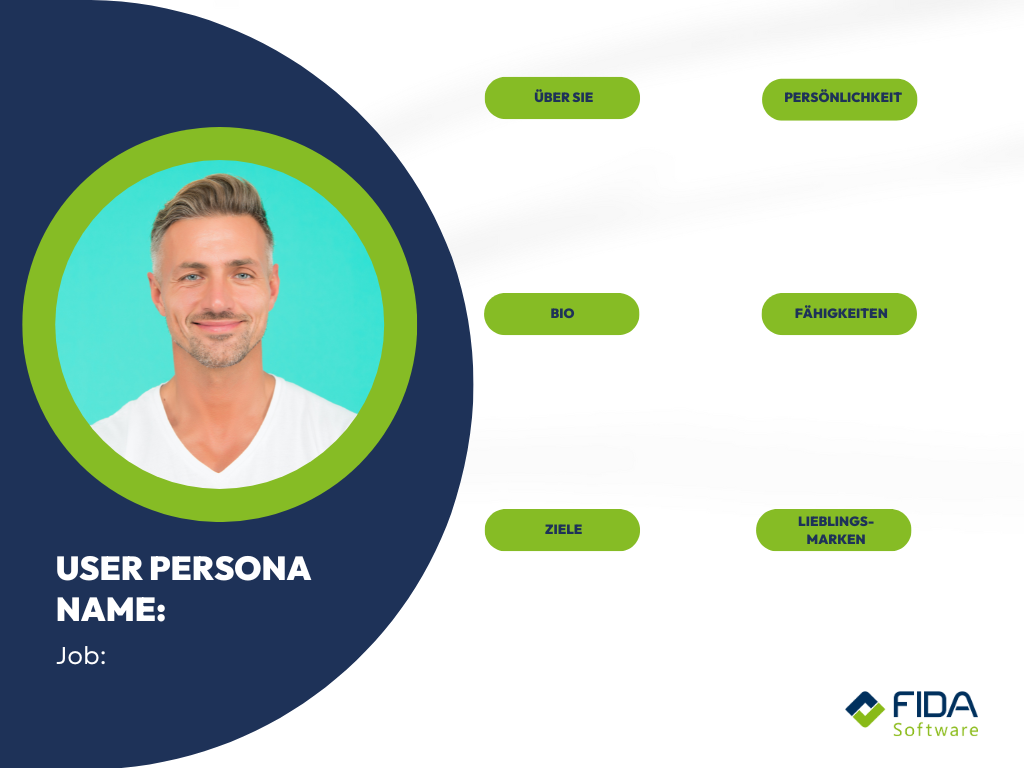
Buyer persona vs. persona - is there a difference?
Yes - but the transitions are fluid and relate to different areas, such as B2C or B2B contexts:
The term persona describes a fictitious but realistic representation of a typical user. The focus here is on user behavior and user scenarios, i.e. how people actually use a product. Personas are primarily used in UX and product design to make user-centered decisions and better understand the needs of users.
In contrast, the buyer persona focuses on the purchasing behavior and decision-making processes of potential customers. It is typically used in marketing and sales to develop targeted communication strategies and design purchase incentives.
The target group, in turn, describes a demographically or psychographically defined group of people who are connected by certain characteristics or interests. It is primarily used in strategy and market analysis as a basis for segmenting markets and determining target markets.
While classic personas are primarily used in the UX and product context, the buyer persona is aimed at purchasing behavior and answers questions such as:
"What motivates a customer to buy?"
"Which channels can be used to reach them?"
"What objections does he have?"
The target group description forms the starting point for the development of personas by defining potential customers based on socio-demographic and psychographic characteristics and differentiating them from the personalized, emotional buyer persona.
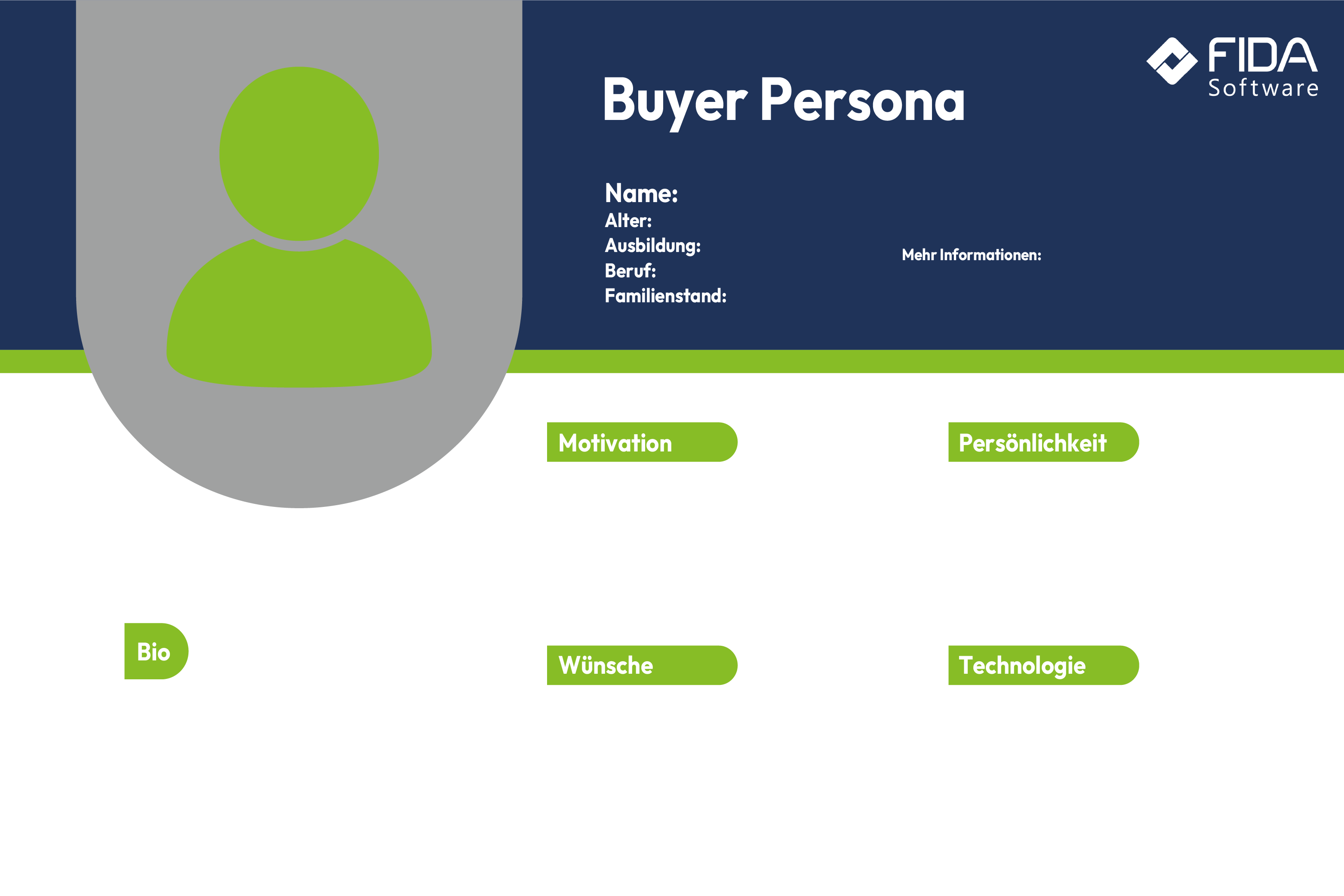
What does a persona look like in practice? Buyer persona example "Stefan"
Product: Server or cloud solutions for SMEs
Name: Stefan Müller
Age: 41 years
Position: IT manager at a medium-sized mechanical engineering company
Goals: Stable IT solutions, integrations into existing systems, support security
Challenges: Little time for evaluations, limited budget
Quote: "I don't want to rethink the system every month - it has to work."
Decision paths: Recommendations from partners, product demos, specialist articles
Sources of information: LinkedIn, webinars, specialist blogs
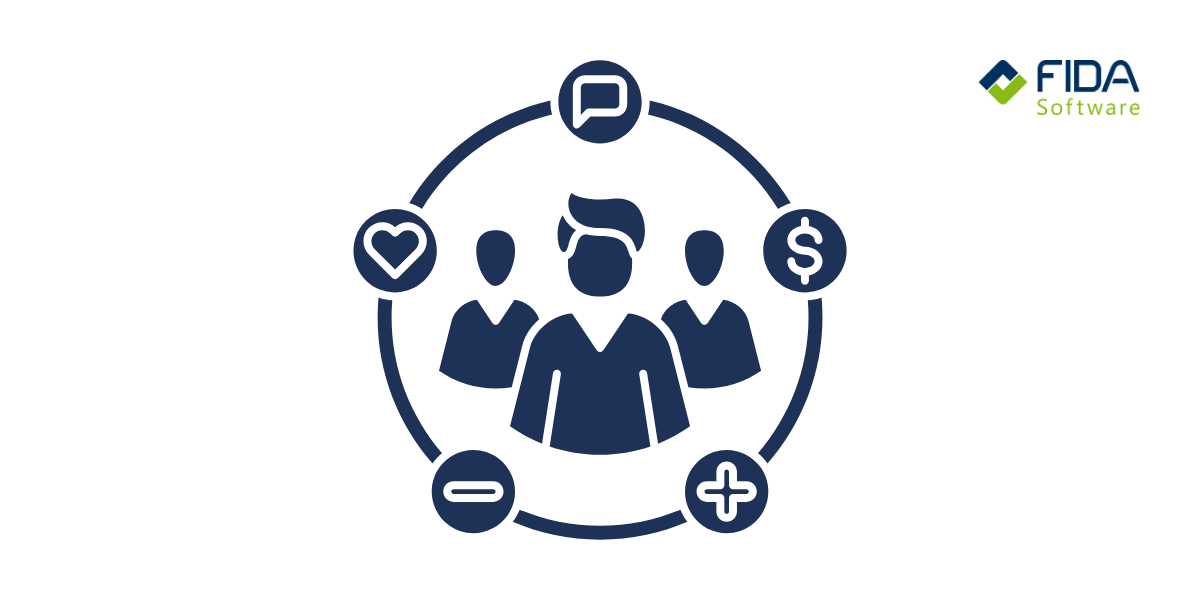
Persona vs. target group - what are the differences?
A target group describes a clearly defined group of people that a product, service or message is intended to appeal to. It is usually defined on the basis of demographic, geographical, psychographic or behavioral characteristics.
A persona, on the other hand, represents a typical representative of the target group who is equipped with individual characteristics, expectations and behaviors.
Typical characteristics of a target group
Age, gender, income, level of education
Profession or industry
Interests, values, lifestyle
Purchasing behavior or usage patterns
Example of a target group:
"Working mothers aged between 30 and 45 who live in urban areas, value healthy eating and regularly shop online."
Target groups help to focus marketing measures - but they still say little about how these people think, feel or decide. This is exactly where personas come in: They bring target groups to life and make them tangible.
A persona, on the other hand, is a concrete representative of this group - with a name, everyday life, goals and concrete problems. In this way, they help to make decisions in a more human, targeted and empathetic way.
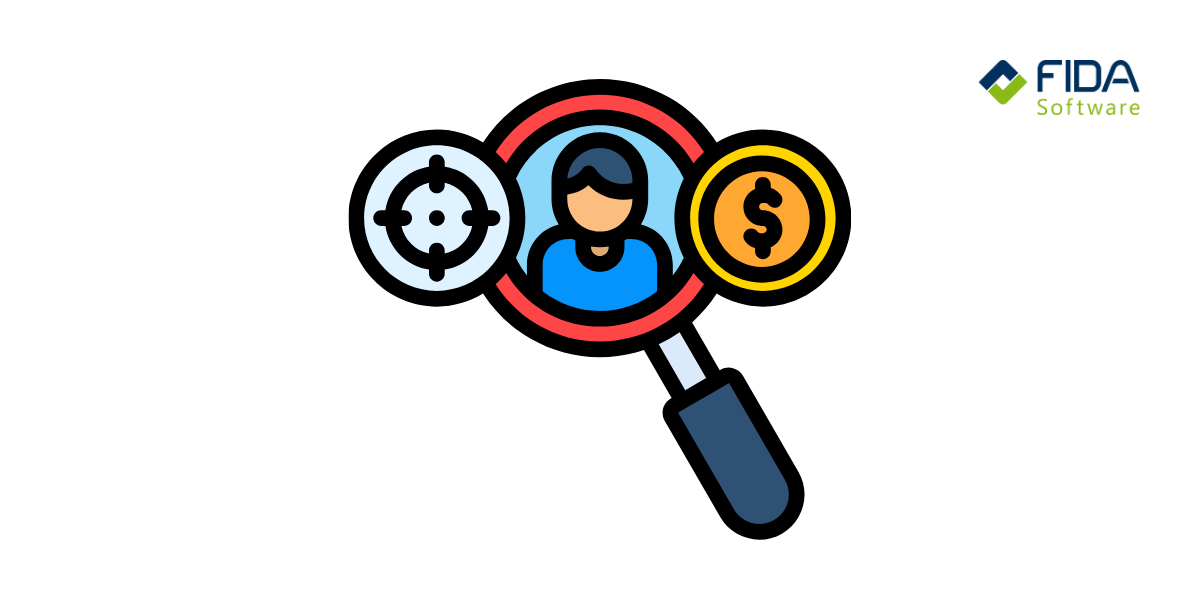
What advantages do personas offer?
Whether developing a product, designing a website or planning a marketing campaign - without a clear picture of the target group, a lot of things remain in the fog. Personas provide a clear focus. They provide a quick and clear view of the most important user information. Personas turn raw data into real people and loose assumptions into concrete requirements.
Here are the most important reasons why they are so valuable and why we count on them at FIDA
Advantage 1: Shared understanding within the team
Personas help to align everyone involved - from developers to marketing to management - with a uniform view of the user. Decisions are no longer made on instinct, but are based on a shared understanding of the target group.
Advantage 2: User-centered product development
Personas can be used to tailor functions, content and processes to the needs of specific user groups. Instead of developing "everything for everyone", teams can prioritize specific use cases - which leads to higher usability and user satisfaction.
Advantage 3: More effective communication & approach
In marketing or sales, buyer personas enable a targeted, personalized approach. By testing different approaches, it is possible to find out how the target group can be reached most effectively. If you know what questions, hurdles or information needs a buyer has, you can adapt your messages accordingly - and thus increase conversion rates.
Advantage 5: Time and resource efficiency
A clear focus on relevant user groups means that development and marketing resources can be used more efficiently. Unnecessary features, irrelevant content or wastage in campaigns are reduced.
Advantage 6: More empathy for real people
Personas help to see users not as data points or "users", but as people with real needs, contexts and challenges. This empathy is the key to good UX measures.
Not every persona is the same - you should know these 4 types
Depending on the goal, context and area of application, personas can differ greatly. Personas are used in different areas such as marketing, sales and product development in order to specifically address the respective requirements.
While product design focuses primarily on user behavior, sales and marketing are more interested in motives and decision-making processes. It is therefore helpful to distinguish between different types of personas:
Type 1: User personas
This persona represents a typical user of your product or service. It helps UX teams to better understand usage habits, needs, frustrations and goals - and to target functions accordingly.
Area of application: UX/product design, customer experience
Example: "Anna (29), marketing manager, uses web solutions for campaign planning, values clarity and mobile use."
Type 2: Buyer personas
In marketing, the focus is on the decision to purchase - not necessarily on daily use. Buyer personas help to understand buying motivations, objections, decision-making processes and sources of information.
Area of application: Marketing, campaign planning
Example: "Thomas (45), IT manager, decides on software purchases, pays attention to security, budget and integration."
Type 3: Negative personas
A negative persona deliberately does not describe the target group - i.e. people who, for example, do not fit into the budget, have no real interest in buying or are not profitable. They help to reduce wastage.
Area of application: Campaign management, sales efficiency
Example: "Laura (22), student, uses free versions, changes frequently and doesn't spend money on digital products."
Type 4: Proto personas
Proto personas are created without prior user research - usually from internal assumptions. They are a good starting point in early project phases, but should later be validated with real data. Proto personas serve as a quick, cost-effective method for target group analysis.
Area of application: Ideation, MVP phase, agile teams
Example: Based on team workshops or founders' experiences.
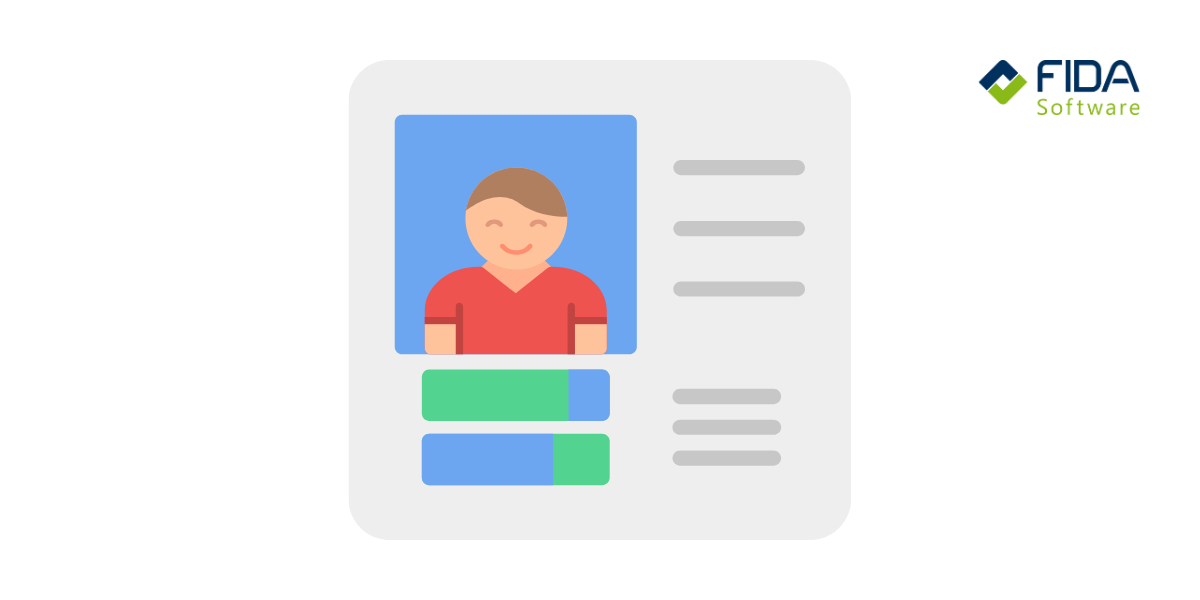
How do I go about creating a persona? - 6 steps to the finished persona
Creating a persona is not rocket science - but it does require a structured approach and a genuine interest in the people who will use (or buy) your product.
By developing personas, companies have the opportunity to identify customer needs in a targeted manner and derive well-founded decisions for product development.
Here is a tried-and-tested step-by-step guide:
Step 1: Define goal and context
Before you start, ask yourself the following questions about the persona:
What do you need it for? (Product development, UX, marketing, campaign, etc.)
What decisions should it support?
Who will work with it?
Tip: It is better to create several specific personas for individual use cases than one overarching universal one.
Step 2: Collect data sources
Good personas are not based on gut feeling, but on real insights or data sources:
Interviews with customers or users
Online surveys (e.g. via Typeform or Google Forms)
Web analytics & user data
Support requests & user feedback
Sales insights & CRM data (information from the customer relationship management system)
Market research data/studies
Tip: Internal sources (e.g. support, sales, customer service) also provide valuable perspectives.
Step 3: Analyze patterns and behaviours
Gather insights and look for repetitions, patterns or similarities:
Which goals are often mentioned?
Which challenges occur regularly?
Which decision-making paths are typical?
Make sure to analyze the collected answers from the interviews and surveys in a structured way in order to gain the most important insights for the persona creation.
Tip: Group similar statements to form clusters. This often results organically in 2 - 3 core personas.
Step 4: Define attributes
Now it gets specific: give your persona a face and a personality:
Name, age, profession, industry
Level of education, income, marital status
Goals & wishes
Challenges & frustrations
Behavior & media usage
Decision-making factors & buying motives
Quotes that reflect their attitude
The characteristics of the persona should always be aligned with the development of the product.
Tip: Avoid stereotypes and use real statements from interviews to create authenticity.
Step 5: Visualize & document
Present the persona clearly - preferably on an A4 page or in a digital solution for sharing (e.g. Figma, etc.): Presenting the persona to the team promotes acceptance and understanding of the target group.
Portrait photo (stock photo)
Short biography
Overview of behavior and motivation
Central needs & goals
Quotes for categorization
Media and decision-making behavior
Step 6: Validate & iterate in the team
Involve your team:
Does everyone agree with the persona?
Are there contradictory assessments?
What is still missing?
Personas are not a one-off task, but living documents. Regular updates based on new findings make sense. The continuous review and further development of personas is crucial to ensure relevant and precise target group approaches in the long term.
5 tips for creating personas
Even if the methodology is clear, there are typical pitfalls when creating personas. A template can serve as a helpful tool to make the process structured and efficient. Here are proven best practices to make your personas truly useful and effective - and not forgotten as a PDF on your hard drive.
Here are some tips:
Tip 1: Build on real data - not assumptions
Sure, you can also work with proto personas. But in the long term, real user data is essential. Interviews, surveys or CRM data provide the decisive difference between "presumed" and "really relevant".
Tip 2: Don't create too much
More is not always better. Too many personas are more likely to confuse than help. The rule of thumb: 2 - 4 core personas are completely sufficient for most projects - especially if you focus them on clearly distinguishable user needs.
Tip 3: Make it tangible and present
A persona is not a purely strategic document - it should have an impact in everyday life. Put them up in the office, share them in meetings, use them in presentations. Regular use of personas in everyday working life increases their effectiveness and ensures that user needs are continuously incorporated into the development process. The more often it is visible, the better it works as a basis for decision-making.
Tip 4: Treat them as living documents
Markets change. So do user needs. Therefore: Personas should be regularly reviewed and updated - e.g. after major product changes, new target markets or feedback analyses.
Tip 5: Use quotes, images and storytelling
Good personas tell stories. Instead of just listing bullet points, small narratives help you to really imagine the person. Particularly effective:
Original quotes from interviews: "I only use the app on the train in the morning - everything has to happen quickly."
A realistic photo instead of a symbolic image
A typical daily routine or usage scenario
You can use these tools to create personas
The best insights are of little use if they are not well documented and communicated. The creation and use of personas Personas are a central component of target group analysis and marketing planning, as they help to define typical representatives of the target group and address their needs in a targeted manner. Fortunately, there are a variety of tools and templates that help you to visualize personas in an appealing and clear way - without any design knowledge.
Here is an overview of common software solutions - from simple to professional:
Xtensio is a web-based tool that specializes in the creation of personas. With its numerous templates and customizable templates, it is particularly suitable for teams in marketing and sales who want to develop visually appealing personas quickly. The platform emphasizes simple collaboration and clear structures, making it ideal for professional use in a strategic context.

Miro offers a flexible and visual environment in the form of digital whiteboards that enable the collaborative creation of personas. The tool is often used by UX and product design teams, especially in workshops or for joint idea development. The ability to work in real time and use different templates makes Miro particularly suitable for creative team processes.
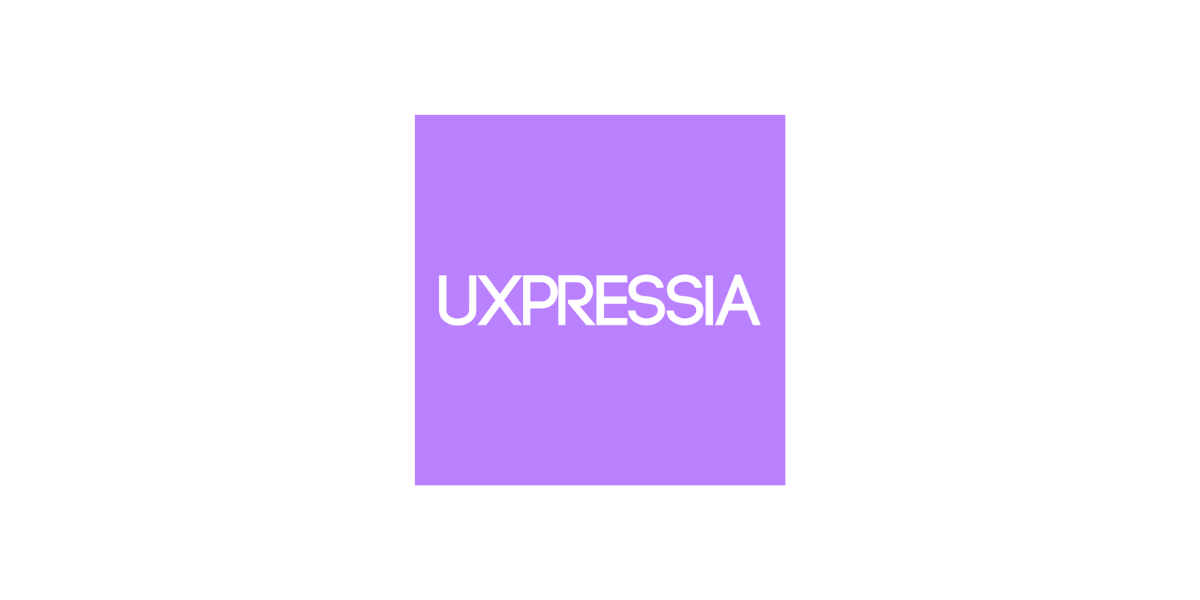
UXPressia is a specialized tool for the development of personas and customer journeys. It offers structured templates, detailed analysis functions and a close link between persona and journey mapping. This makes it particularly popular in UX design and service design, where an in-depth consideration of the user experience is required.
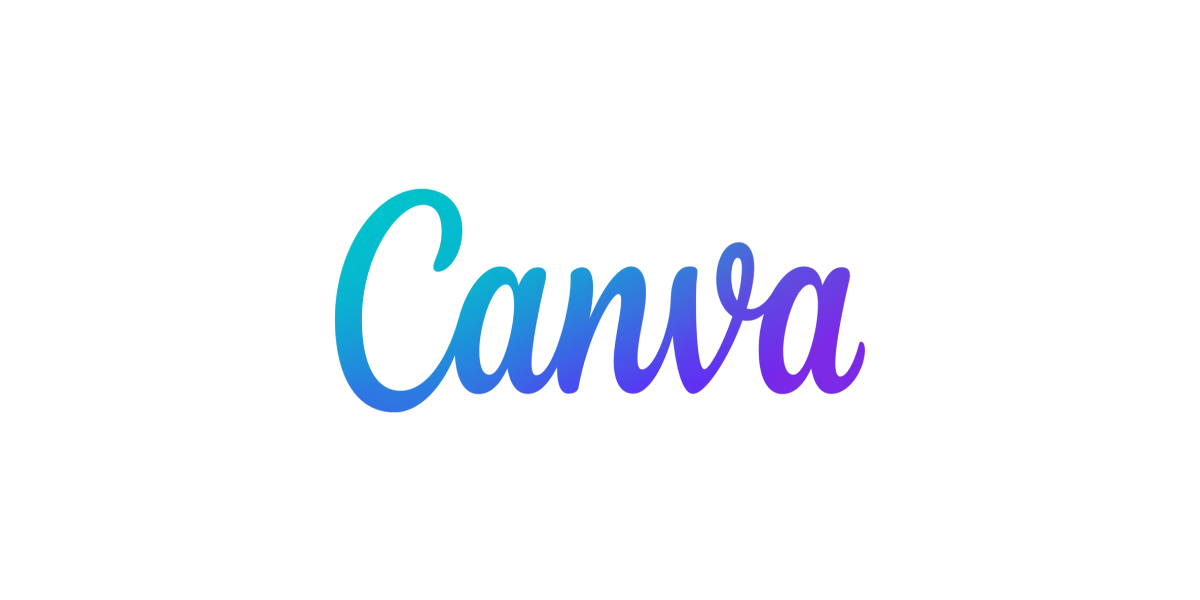
Canva is also a practical solution, especially for beginners and freelancers. With its ready-made persona templates and simple drag-and-drop design system, personas can be created quickly and in a visually appealing way. Canva is ideal for anyone who wants to achieve professional results without a lot of effort.
Finally,Google Slides and Google Docs are simple but extremely team-oriented tools that are suitable for initial drafts or smaller teams. They are quick to use and allow uncomplicated collaboration in real time. Especially when it comes to capturing ideas or developing concepts together, Google tools offer an easily accessible and flexible solution.
Practical example: How a persona influenced a startup
One good example often has more impact than ten theories. So here is a concrete use case from practice of how a persona helped to position a product more clearly and develop it further in a more targeted way.
Initial situation
A SaaS startup offered marketing automation solutions for medium-sized companies (B2B).
The challenge:
Difficulties in addressing the right target groups and using marketing resources efficiently. Previous measures had a general effect and were widely scattered without addressing the exact needs of the target group.
Solution: Data collection & analysis
The team conducts interviews with existing customers and test users, evaluates feedback from support and usage data - and creates two central personas from this. By creating several personas, different user profiles were covered in order to better understand the needs, motives and behaviors of the target group. From the data collected, a series of personas were created - with characteristics such as demographics, pain points, motivations, decision factors and preferred channels.
Marketing campaigns were then tailored specifically to the personas (messages, channel selection, format). Product decisions were prioritized by relevance and the personas were regularly reviewed and adjusted based on new insights from campaigns and user feedback.
Results & impact
Working with data-based personas had a noticeable impact:
124% more qualified leads: By targeting the right customer segments, lead generation increased significantly - without the need for additional advertising budgets.
More visibility on the web: Persona-specific content led to an increase in organic traffic - a sign that the content was better aligned with real search intentions and user needs.
Shorter sales cycle: The time a potential customer spent in the sales process was significantly reduced - because the messages, channels and content were more tailored.
Measurable increase in marketing revenue: Conversion rates improved because campaigns were tailored precisely to the decision-making logic of the buyer personas.
By consistently focusing on real, defined personas, the start-up was able to communicate in a more targeted manner, sell faster and scale more efficiently.
Conclusion: Personas are more than just a pretty PDF! Use them as a strategic tool
Whether in UX design, marketing or product development - personas create clarity. They help teams to put themselves in the shoes of real people and make targeted, user-centered and well-founded decisions.
When created and used correctly, personas are
a shared reference image within the team,
a filter for priorities,
a guide for communication and design.
The following applies:
A persona is not an end in itself. It unfolds its power whenever it is actively used - in brainstorming, in concepts, in meetings, in testing. Those who know their users develop better solutions. Those who understand them develop relevant products.
Tip to take away:
Start small. Talk to real people. And develop personas that do more than just hang on the wall - personas that change decisions.
Are you looking for support in your software project, for example in the creation of personas or in UX design? Then FIDA is the right place for you!
FAQ - How do I create a persona?
A persona is a fictitious but data-based representation of a user group. It helps your team to better empathize with users and align decisions (design, functions, communication) more closely with actual user behaviour.
We create personas in 6 steps - from target definition, data collection and pattern recognition to visualization and validation - to design a well-founded persona.
You can draw on interviews, user surveys, web analytics, CRM data, support feedback and market research. The important thing is that the data should be realistic and show patterns and similarities.
A persona focuses on usage, behavior and needs. A buyer persona, on the other hand, describes buying motives, decision-making processes and how potential customers come to make a purchase. Both concepts can be combined.
It is best to choose 2-4 core personas that are clearly different from each other. Too many personas can be confusing and prevent focused strategies.
Personas should be seen as "living documents": Review them regularly with new data, user feedback or changing market conditions. Iteration is key.
The blog post mentions tools such as Xtensio, Miro, UXPressia or simple solutions such as Google Slides / Google Docs - depending on how visual, collaborative and convenient the tool should be.
